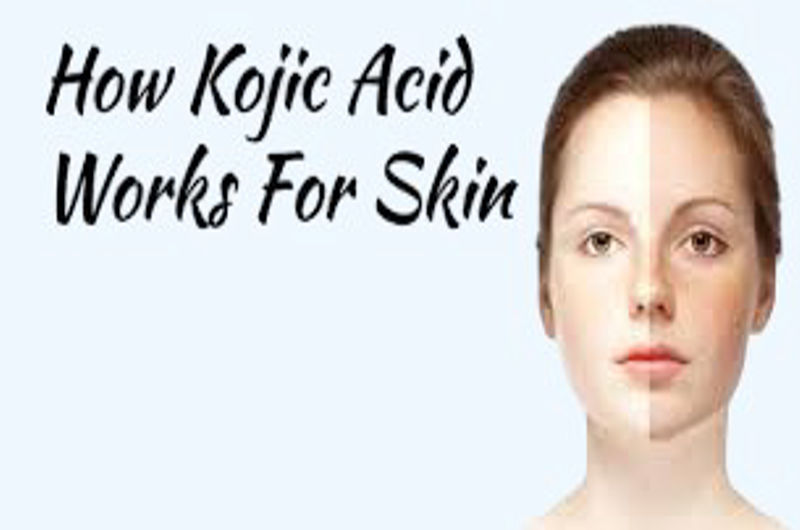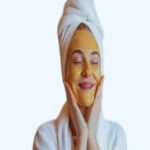Kojic acid has become a buzzworthy skincare ingredient, praised for its brightening and anti-aging effects. But is it right for you? While it can help fade dark spots and even out skin tone, it also comes with potential side effects that users should know about.
In this article, we’ll break down:
✔ The science-backed benefits of kojic acid
✔ Potential side effects and risks
✔ How to use it safely for maximum results
Whether you’re dealing with hyperpigmentation, acne scars, or sun damage, understanding this powerful ingredient will help you decide if it belongs in your skincare routine.
What Is Kojic Acid?
A naturally occurring substance, kojic acid is produced by fungi, specifically during the fermentation of rice, soy, and malt. Because of its capacity to prevent the generation of melanin, it is frequently used in skincare products to treat:- Dark spots (melasma, post-inflammatory hyperpigmentation)
– Sun damage (age spots, freckles)
– Uneven skin tone
It’s often compared to hydroquinone (a stronger skin-lightening agent) but is considered a gentler alternative with antioxidant properties.
The Top 5 Skin Benefits of Kojic Acid
1. Brightens Hyperpigmentation
Tyrosinase, the enzyme that produces melanin, is blocked by kojic acid, which aids in fading:
✔ Melasma (hormonal dark patches)
✔ Acne scars
✔ Sunspots
Best for: Those with stubborn discoloration that doesn’t fade with vitamin C or AHAs.
2. Fights Acne & Reduces Bacteria
Thanks to its antimicrobial properties, kojic acid can:
✔ Reduce acne-causing bacteria
✔ Minimize post-breakout dark marks
✔ Help control excess oil
3. Antioxidant Protection
It prevents premature aging brought on by pollutants and UV exposure by neutralizing free radicals.
4. Gentle Exfoliation
While not as strong as glycolic acid, it helps remove dead skin cells, promoting a smoother complexion.
5. Safe Alternative to Hydroquinone
Unlike hydroquinone (which has potential long-term risks), kojic acid is considered safer for prolonged use.
Potential Side Effects of Kojic Acid
While beneficial, kojic acid isn’t for everyone. Possible side effects include:
1. Skin Irritation (Redness, Burning, Itching)
– More common in sensitive skin types
– Can worsen rosacea or eczema
Fix: Start with low concentrations (1%) and patch test first.
2. Increased Sun Sensitivity
-Skin becomes more vulnerable to UV ray damage.
-If sunscreen is not utilized, it might exacerbate pigmentation.
Rule: Always apply SPF 30+ during the day.
3. Allergic Reactions (Rare but Possible)
Some may develop contact dermatitis.
Signs to watch for:
✔ Swelling
✔ Rash
✔ Severe redness
Solution: Discontinue use if irritation occurs.
4. Instability in Formulations
If kojic acid is exposed to air or light, it can oxidize and lose its potency.
Keep an eye out for: Airless pumps and opaque or dark packaging.
How to Get the Best Out of Safe Kojic Acid Use
1. Choose the Right Product
✔ Serums (1-2% concentration) – Best for targeted treatment
✔ Soaps (often combined with papaya or glutathione) – Good for overall brightening
✔ Creams (mixed with arbutin or vitamin E) – Hydrating option
Avoid: Using multiple brightening agents (like vitamin C + kojic acid) at the same time—space them out to prevent irritation.
2. Start Slow (Patch Test First!)
– Put a tiny bit behind your ears or on your inner arm.
– Wait 24-48 hours for reactions.
– If no irritation, use 2-3 times a week, gradually increasing.
3. Always Use Sunscreen
Since kojic acid makes skin more UV-sensitive, SPF is non-negotiable.
Best practice:
✔ Apply kojic acid at night
✔ Use broad-spectrum SPF 30+ daily
4. Don’t Overuse It
Long-term daily use can cause skin sensitivity.
Ideal cycle:
✔ Use for 8-12 weeks
✔ Take a 1-2 month break
✔ Resume if needed
Who Should Avoid Kojic Acid?
❌ Very sensitive or reactive skin
❌ Those with active eczema/rosacea flare-ups
❌ Pregnant or breastfeeding women (limited research on safety)
Final Verdict: Is Kojic Acid Worth It?
✅ Yes, if you struggle with hyperpigmentation and want a gentler alternative to hydroquinone.
✅ Best for normal, oily, or combination skin types (dry/sensitive users should proceed with caution).
✅ Must be paired with sunscreen to avoid worsening dark spots.

Posted inBeauty & Tips

